Traffic Attribution Without Explicit Touch | Mobio Group
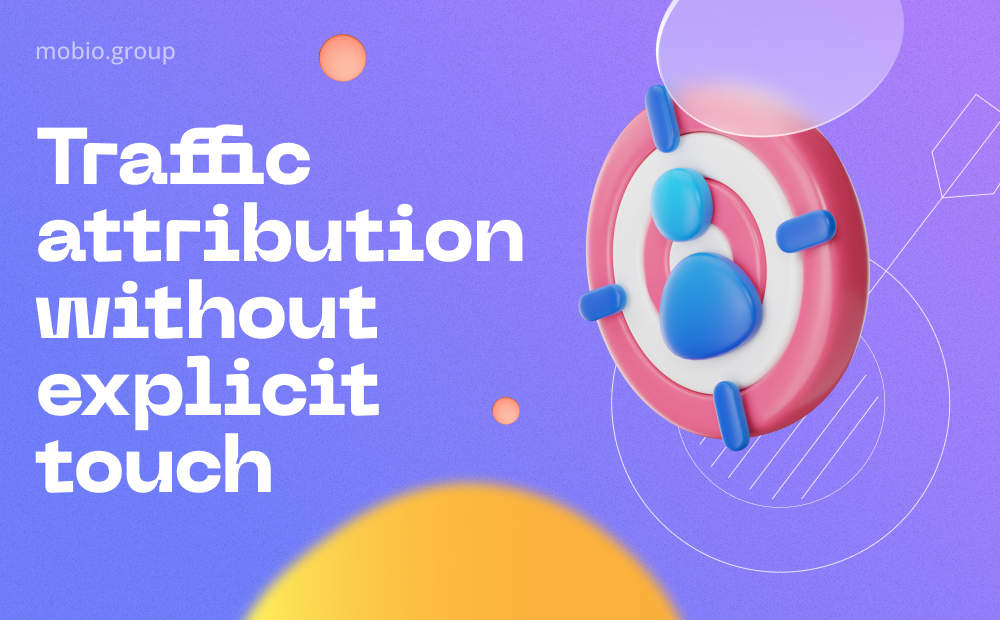
In previous articles, we have talked in depth about what traffic attribution is and how it happens. What attribution models exist, what criteria are used to select them, and how all of this affects the effectiveness of advertising campaigns. Attribution models use ad clicks to track user interactions with advertising channels. But what if your ad campaign uses channels that do not include ad clicks and it is impossible to track user interactions with ads? Such channels include for example: TV, radio, Influencer ads, podcasts, word of mouth (WOW). In this case, you will not know the full path of user interaction with advertising, and therefore, you will not be able to get objective data on the effectiveness of each channel, no matter how carefully the attribution model was chosen.
In this article Mobio Group team will discuss the ways of traffic attribution without clicks and conversions.
Traffic Attribution Levels
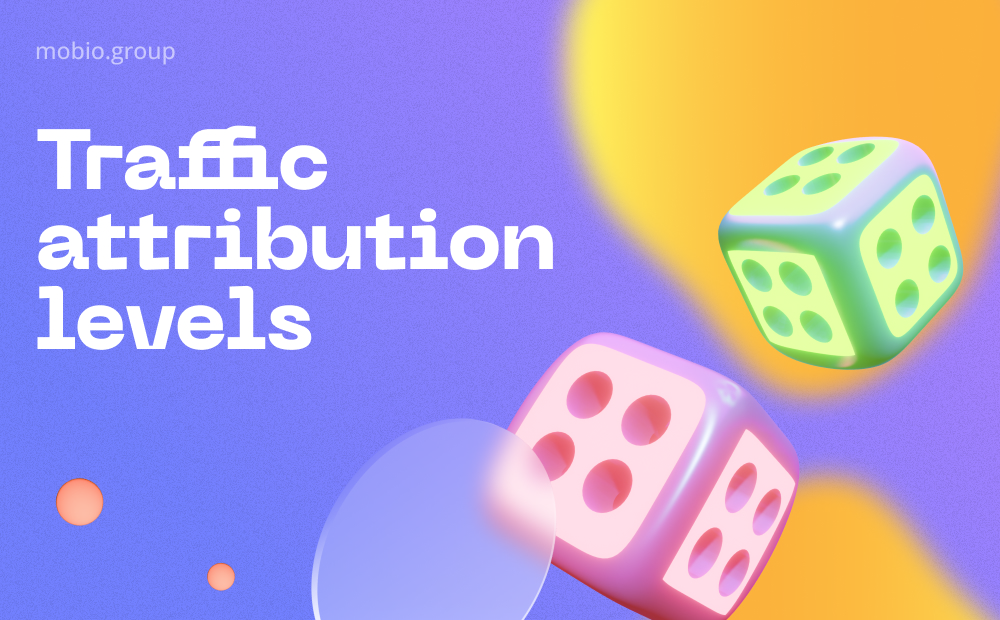
Classic traffic attribution models track traffic at the user level. And, of course, if you have the opportunity, you should give preference to such attribution methods. This allows you to study the path of interaction of a particular user with advertising. You can also monitor his behavior in the application. Additionally, you can create personalized offers for the user, and there are even more possibilities.
Unfortunately, not all channels can be tracked at the user level. In such cases, segment-level attribution methods are used. These methods enable you to study the path of interaction of a particular user with advertising. You can also monitor their behavior within the application. Additionally, it allows you to create personalized offers for the user and more. The main challenge in using segment-level attribution is to properly identify the segment.
User-level Attribution Methods
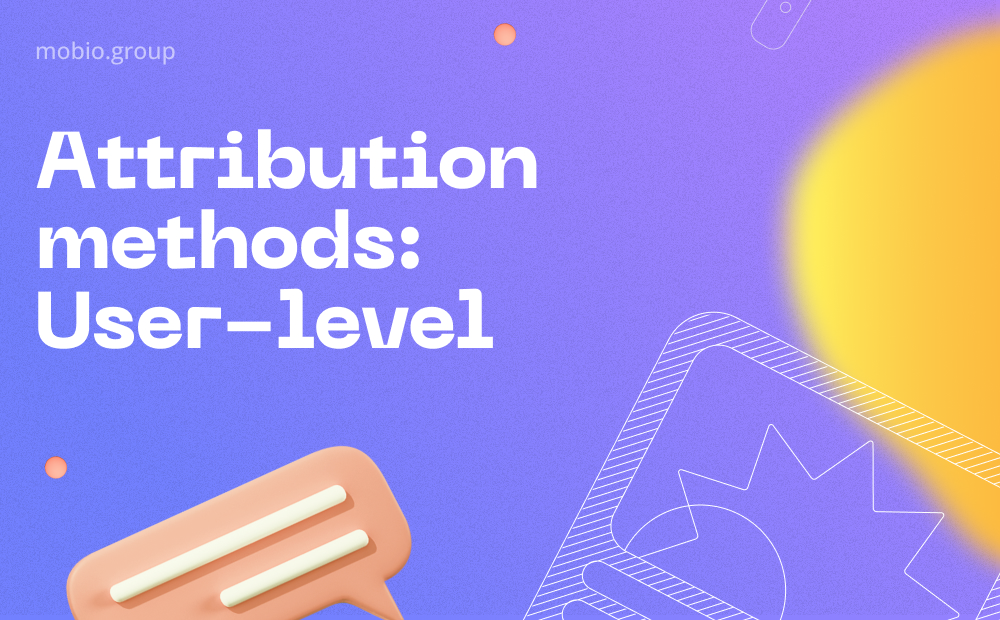
Surveys
Quite simple, convenient and, at the same time, powerful tool, with the help of which you can get not only the necessary data, but also unexpected insights about advertising channels, which you wouldn’t ever guess. In addition, we can emphasize the following advantages of this method:
- Possesses a fairly high accuracy provided that there is a large sample of answers.
- By including additional questions in the questionnaire, it is possible to study user behavior, their motivation, attitude to the brand and other important points in more detail.
- Gives the opportunity to track early interactions with advertising.
The disadvantages of this method include the fact that it works well only with those channels that are clearly perceived by users as advertising, and does not allow you to determine the effectiveness of individual ads or different advertising formats used in one channel.
In addition, some users answer questions without reading them, or give random, humorous or deliberately false answers. In order to minimize the distortion of data as a result of such answers, false awareness is measured beforehand. The idea is that a new advertising channel is added to the questionnaire before advertising is launched and the percentage of users who chose it as a response is determined. Knowing this value, it will be possible to adjust the final data in the future, thereby increasing its accuracy.
What else should be considered:
- The wording of the questions and suggested answers is important. Users should clearly understand what the question is about and not be confused by terms and abbreviations. At the same time, you need to avoid a situation where users are inclined to choose a certain answer option.
- Surveys in which the user can choose only one answer option provide more accurate data.
- We recommend giving users the opportunity to write their own answer choice for a question.
- Don’t forget to measure the “tail” — residual traffic that brings customers for some time after the end of the advertising campaign.
- Surveys can be launched both before the target action (installation, registration, purchase) and after. As a rule, the “after” option is preferable — in this case, no additional obstacles are created on the user’s way to the target action, and you can get more complete data on user experience in your app. At the same time, the “before” option is considered to be more motivated, because after taking a targeted action, the user may lose interest in the app and ignore the survey.
The main task when attributing traffic using surveys is to collect the necessary information while remaining unobtrusive to customers.
Promo Codes

Another easy-to-use method that both marketers and users are familiar with.
The main advantages:
- Most often involve the user receiving some sort of benefit, which increases motivation.
- As a rule, promo codes have a limited validity period, which increases the speed of decision-making on the target action of the user.
- Gives the opportunity to track the effectiveness of individual ads or advertising formats within a single advertising channel.
- Promo codes are easy to share, which can encourage the growth of word of mouth (WOW).
Disadvantages:
- Additional infrastructure needs to be put in place to activate the promo code before taking the targeted action.
- For some users it may be an obstacle on the way to the target action.
- Does not work well with the premium segment of goods and services, where users have little interest in discounts.
- With the widespread development of word of mouth, there is a significant distortion of data.
When assessing the effectiveness of advertising campaigns, it is worth considering that not all users eventually apply promo codes. Some forget the promo code, someone misheard or mistakenly entered. Therefore, a promo code should be easy to remember and simple to write.
Landing Pages
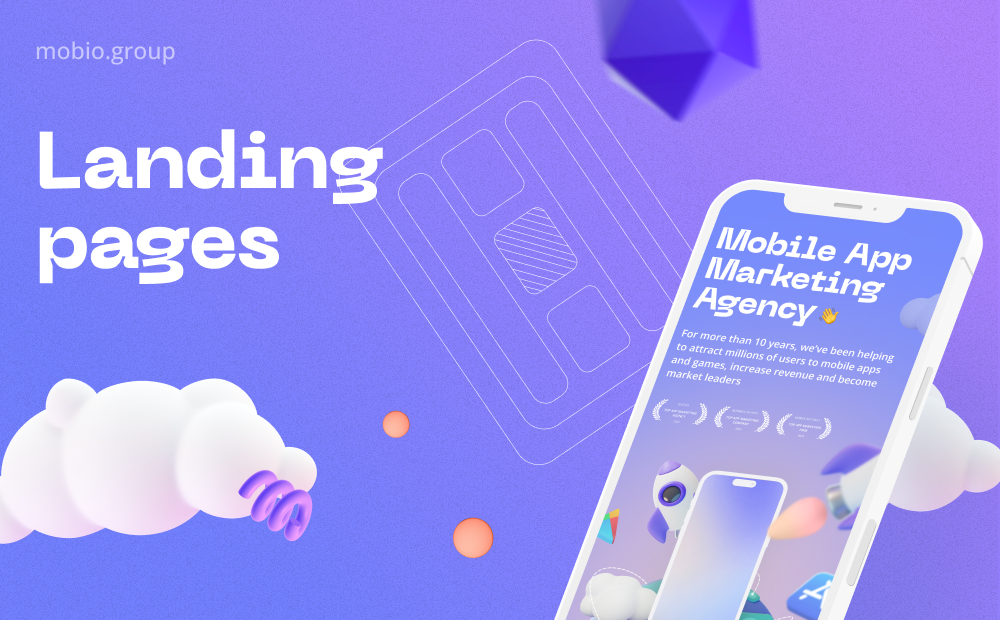
The essence of the method is that a page with a unique address is created for each advertising channel. The method is simple and easy to use and similar in parameters to the use of promo codes, so the advantages and disadvantages are mostly the same.
We should only add that the same page can be used repeatedly in the same type of advertising campaigns, but it is necessary to remember about the “tail” (the residual effect of the advertising campaign) and spread them over time so that the results of one campaign do not fall into the results of the subsequent one.
Attribution at the Segment Level
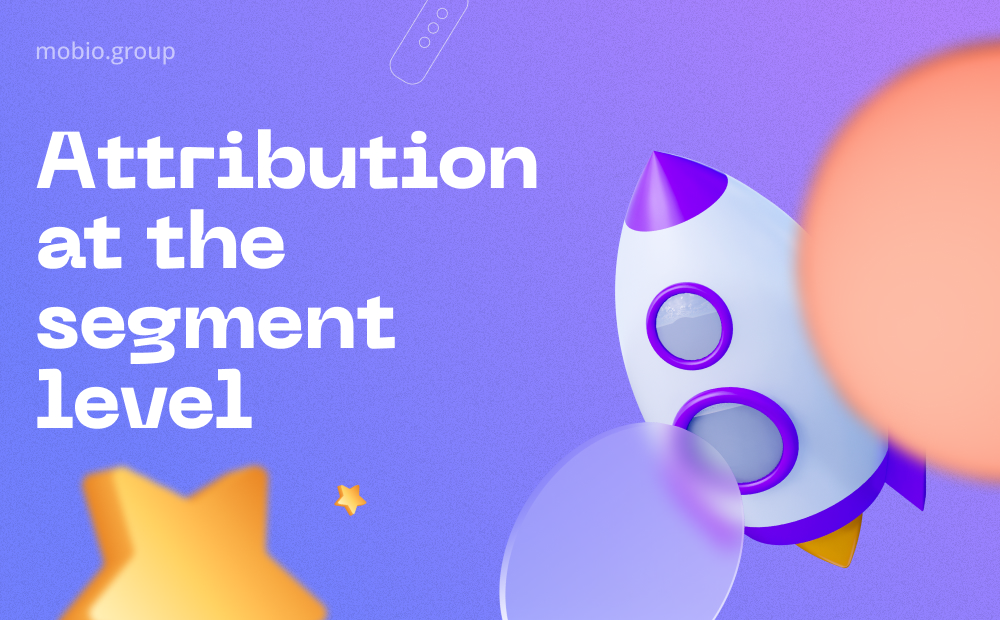
Spike Analysis
As the name suggests, this method is based on measuring “spikes” (bursts) of organic and branded traffic during the period of an advertising channel. This portion of traffic is then attributed to the advertising channel.
The process consists of simple steps:
1. Define baseline — measure the metrics you need (installs, registrations, sales) before running ads.
2. Launch the advertising channel.
3. Measure changes in organic and branded traffic during the advertising campaign.
4. Calculate the difference between organic and branded traffic during the advertising period.
5. Don’t forget the tail.
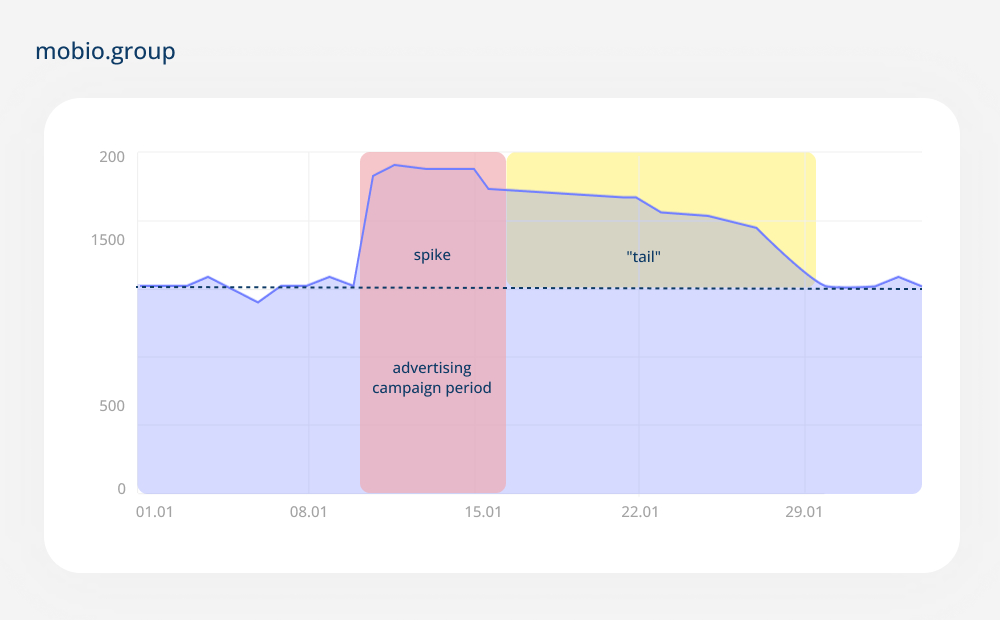
When launching testing, you should take into account the seasonality of goods and services, as well as holidays and pre-holiday periods. During the analysis, you should not launch new advertising channels or make changes to the already launched ones.
Deprivation Testing
Enable/Disable/Re-enable advertising on a channel by measuring the size of traffic spikes or conversions. The method is used as an auxiliary to refine details and identify the most optimal ad parameters.
Regional or geotesting
Two regions that are maximally similar in key parameters are selected, in one of them the advertising channel is launched, and in the other one it is not. After that, the difference in key indicators (installations, purchases, registrations) is measured.
In actuality , it is the same spike-analysis, only as a baseline is taken the result of the region in which the advertising was not launched.
It can be used in conditions where it is not possible to ensure “sterility” of the conditions of classical spike-analysis. For example, when it is necessary to measure the effectiveness of launching advertising on holidays or when working with an advertising channel that has a very long “tail”.
Disadvantages of the method:
- It is difficult to select regions that are similar in key characteristics.
- Not all advertising channels allow you to choose a region.
- Lost profit due to advertising being turned off in one of the regions.
As we have already mentioned, in some situations only these methods allow you to attribute traffic. But the Mobio Group team practices their implementation not only for advertising campaigns without explicit user contact with ads, but also as a supplement to classic attribution methods. In this way it is possible to discover previously unknown advertising sources and motives of user behavior (when implementing surveys), to motivate users and stimulate the development of word of mouth (when using promo codes and landing pages), to get more complete data and unexpected insights about advertising campaigns.


